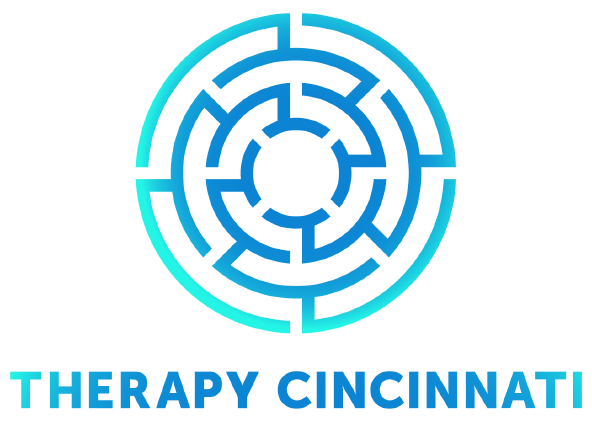EMDR (Eye Movement Desensitization and Reprocessing) is a psycho-therapy treatment that was originally designed to alleviate the distress associated with traumatic memories. (Shapario’s, 1989a) adaptive information processing model posits that EMDR therapy facilitates the accessing and processing of traumatic memories and other adverse life experience to bring these to an adaptive resolution. After successful treatment with EMDR therapy, affective distress is relieved, negative beliefs are changed, and stress is lower. During EMDR therapy the client focuses on emotionally distributing material in small amounts while simultaneously focusing on an external stimulus.
Most therapists use directed laterally eye movements as the external stimulus but a variety of other stimuli including hand-tapping and audio stimulation are often used.
(Shapiro, 1991) hypothesizes that EMDR therapy facilities the accessing of the traumatic memory network so that information processing is enhanced, with new associations forged between the traumatic memory and more adaptive memories or information processing, new learning, elimination of emotional distress, and development of cognitive insights.
EMDR Therapy Uses a Three Pronged Protocol.
• The past event that have laid the groundwork for dysfunction is processed, forging new links with adaptive information.
• The current circumstances that cause stress are targeted and internal and external triggers are desensitized.
• Future events are imagined and worked on, to assist the client in acquiring the skills needed for to best function.
EMDR has been found to be successful more than other forms of therapy like Cognitive Behavioural Therapy (CBT) in post-traumatic stress disorder. Post-traumatic stress disorder (PTSD) is prevalent in children, adolescents and adults, and it can occur alone or along with other disorders. A broad range of psychotherapies such as cognitive behavioural therapy (CBT) and eye movement desensitization and reprocessing (EMDR) have been developed for the treatment of PSTD.
EMDR is one of the best remedies of PTSD as per World Health Organization (WHO) and there is a mounting number of studies reporting the effectiveness of EMDR has an effective role in reducing anxiety and depression in PTSD patient.
Method
Seven out of ten studies have shown that EMDR therapy require fewer sessions and /or is more effective than trauma-focused CBT. Only 1-2 hours of EMDR therapy targeting anxious memories can be enough to result in a decrease of anxiety.
In recent years, the scope for the use of EMDR has been expanded. Research has indicated potential applications for patients with stress-related disorders as well as those suffering from wide range of physical condition. Several studies have shown that EMDR can decrease the emotional intensity of anxiety, not only in cases of PTSD but also with regular anxiety. EMDR has also been applied to treat panic disorder and a variety of adverse life experiences.
FIVE REASONS WHY EMDR TREATMENT HAS BEEN FOUND SO SUCCESSFUL.
• EMDR is a process that helps integrate your entire nervous system.
People who have experienced trauma may find that if remains with them in the form of disruptive emotions, sensation, or response. The nervous system may not be able to return to its natural resting space because the trauma is being stored in the body. EMDR allows you to deal with these emotion, sensation, and responses directly, with an impressive amount of accuracy.
According to the EMDR theory, ‘The goal of EMDR therapy is to process completely the experiences that are causing problems and to include new ones that are needed for full health. ‘Processing’ does not mean talking about it. ‘Processing’ means setting up a learning state that will allows experiences that are causing problems to be digested and stored appropriately in your brain. That means that what is useful to you from an experience will be learned, and stored with appropriate emotions in your brain, and be able to guide you in positive ways in the future.
• EMDR therapy takes advantage of our brain’s natural inclination toward healing.
Often, there are mental blocks that get in the way of healthy trauma treatment. EMDR therapists believe there is no reason to assume that healing from trauma necessitate a long recovery time. If a block exists, you will likely find that stress and anxiety will dissipate due to EMDR. The method has been forward to help clients regain the metal process and reasoning unaffected by other treatment.
• EMDR gives you the tools to make important mental connections.
Through bilateral stimulation, emotional responses are transformed and resolved. EMDR standardized treatment strategy hones in on past memories, current challenges, and helpful future action that can lead to healing.
Impressively, the result of recent research show that more than 80% of single-trauma victims experience freedom from PTSD following just three, 90-minutes session.
• EMDR has been shown to yield results in as few as 3-5 treatment during office sessions.
You and your therapist will spend time in the session redirecting your brain and nervous system’s reactions to your trauma through simple bilateral tapping and the therapy is focused and unambiguous. Clients find that the insight and relief gleaned through EMDR are clearly their own, and not those arrived at with the help of their therapists.
• EMDR trauma treatment elicits immediate relief which bolsters further recovery.
Trauma is devastating because it leaves the victims feeling out of control or helpless. EMDR trauma treatment empowers the client. Participants experience a sense of openness and emotional awareness that allows for improved outlook and decision-making. This leads to better, healthier, and a more permanent recovery moving forward.
With the help of EMDR therapy you can receive clear, effective trauma treatment, and finally, move a difficult past experience out of your present life.

